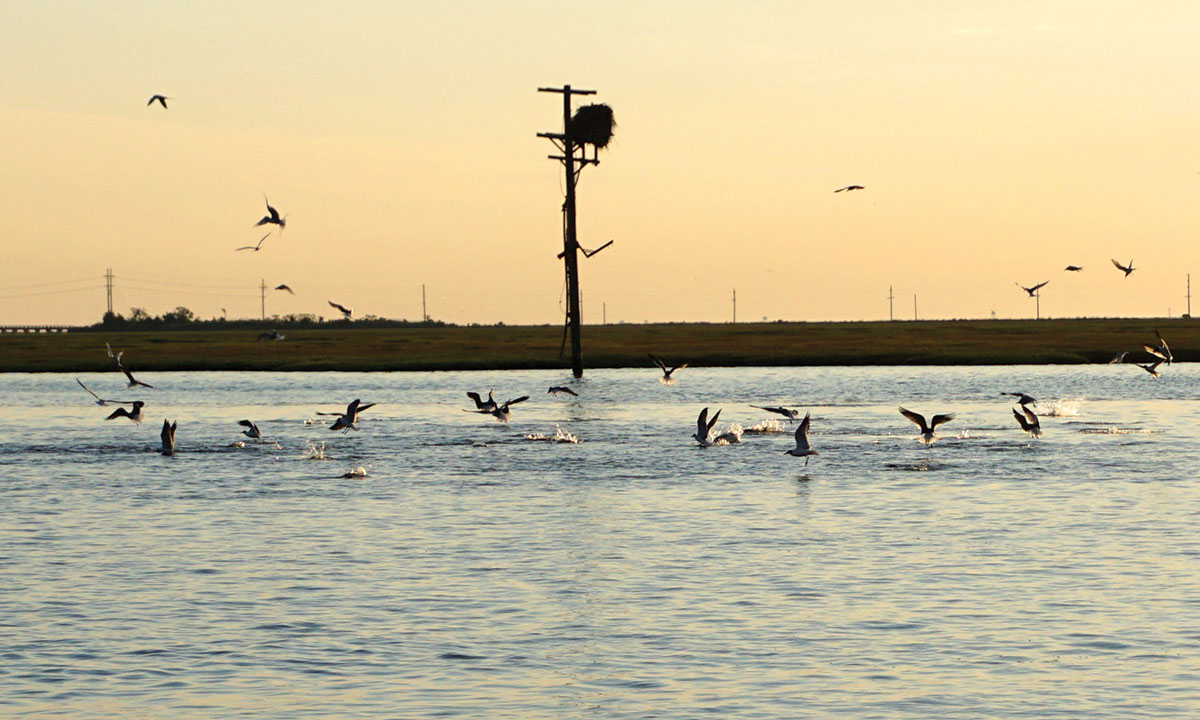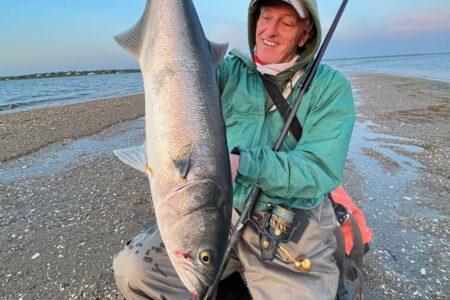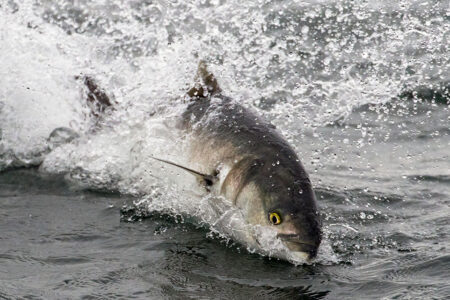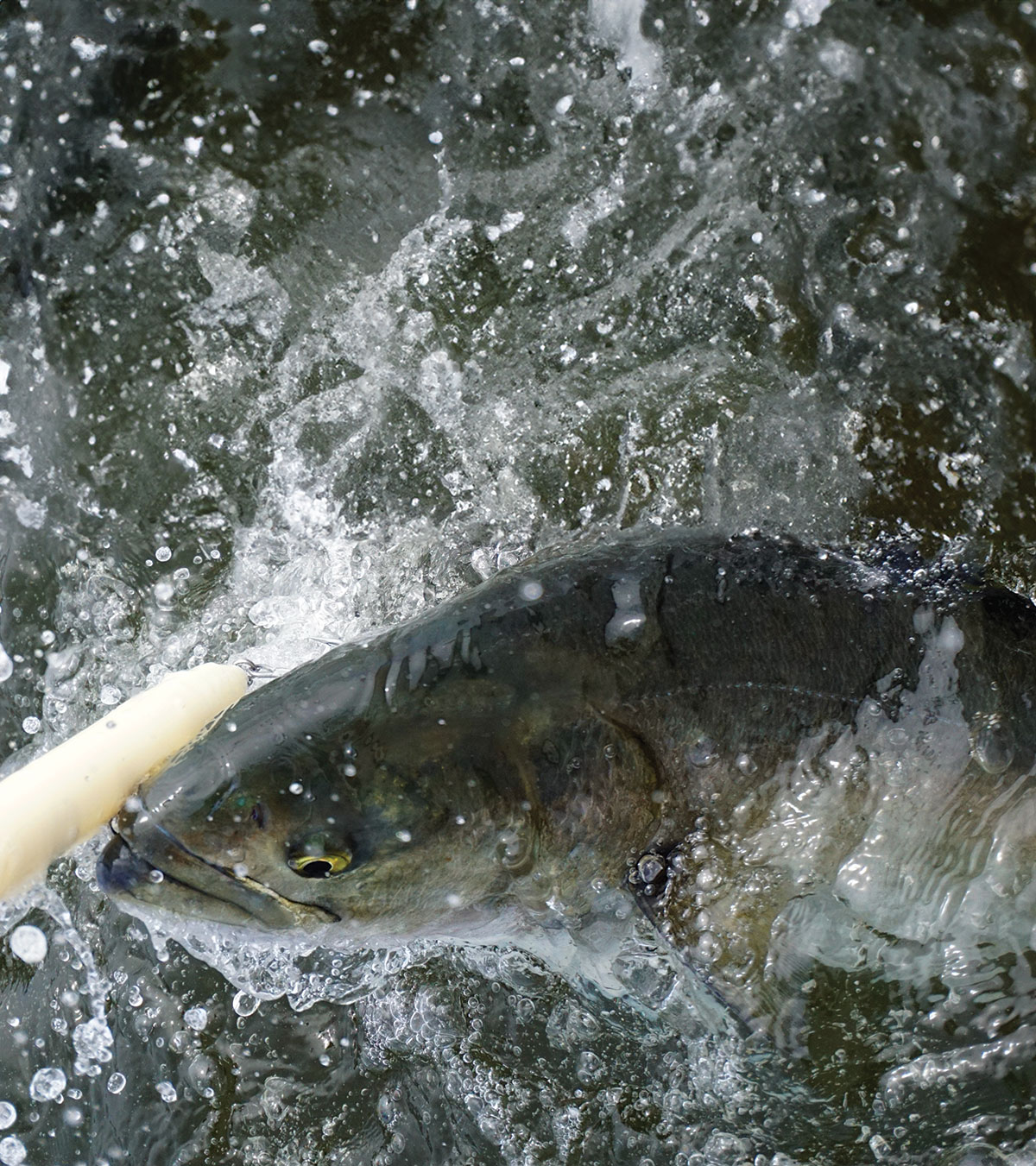
Is ’24 the year that these toothy predators return to feast on bait and tackle?
“Get to the choppa!”
No better way to talk about bluefishing then starting out with the timeless Predator quote from Schwarzenegger because spring bluefishing is an all-out battle.
Choppers, slammers, gators, gorillas – whatever you call ‘em, bluefish certainly earn their nicknames. When roving packs of blues invade the backwaters, bays and surf, nothing is safe. Blues maniacally rip through the waters with knife-wielding maws equipped to shred, tear and destroy baitfish and lures alike, and it makes for some hands-down adrenaline pumping action. From back bays to inlets to out front, it’s time to prepare your battle gear for action.
| BREAKING THE CYCLE |
| In his 1987 bestseller Blues, author John Hersey noted “bluefish come and go in a way no one understands,” going on to describe how blues were plentiful off the New England coast in colonial times, “But then from about 1764 they totally disappeared and didn’t show up again until about 1810. There were tremendous catches from 1880 to about 1905, when they dropped off again for several years. There was a sharp decline again in the 40s; in 1941 almost none were caught except for a few off Maryland and Virginia.”
Back on January 26, an Alabama angler broke a 20-year state record by weighing in a 17-pound, 8-ounce bluefish caught on a Carolina-rigged frozen finger mullet down along the Gulf of Mexico. As several southeast writers noted at the time, a bluefish of that size in the Gulf is somewhat of a rarity. About the same time, anglers along the South Atlantic Coast in Florida were reporting on an invasion of teen-sized bluefish. So is this a cycle? And will we see a similar invasion again along the Northeast and Mid-Atlantic coasts? On March 24, 2024, I received a text from a good friend who wrote “Local dragger captain told me the bluefish are in the Hudson Canyon are so thick they can’t drop their nets and the tilefish guys are getting killed.” J. Hutchinson, Jr. |
The commonly held belief is that after wintering offshore and in the Carolinas, bluefish start their migratory push northward along the Northeast coast usually during the mid-month portion of April, inundating New Jersey waters through May where they push up toward New England waters off Long Island and the Cape to continue their onslaught through June and the summer months.
Where I am in New Jersey, a nor’easter during the second to third week of April usually kicks off the bluefish push into the waters as they are brought in and attracted into the bays by bunker schools, but May is the prime time month for all-day action. In fact, we witnessed an onslaught of major caliber fish that pushed 15 to 24 pounds in the recent years of 2016 to 2019 that absolutely destroyed dreams and kept tackle shops in business. Since then, it’s been mostly smaller-size fish of 2 to 6 pounds, generally racing through for a couple of weeks before moving into the waters off Long Island and Cape Cod, where action on gator-class blues has been omnipresent.
Bluefish seem to come in school classes where 4- to 6-pounders, 8- to 12-pounders, then 14- to 20-pound plus fish hang together. The reason is that smaller blues are not exempt from being attacked and eaten by larger fish.
Generally speaking, “racer” blues are the first to show, skinny from wintering over where a normal 14 pound class length blue will be 8 or 9 pounds. However, in recent years, first wave blues have already been fat and happy with full guts from feeding on the usually present bunker schools that have made a rebound.
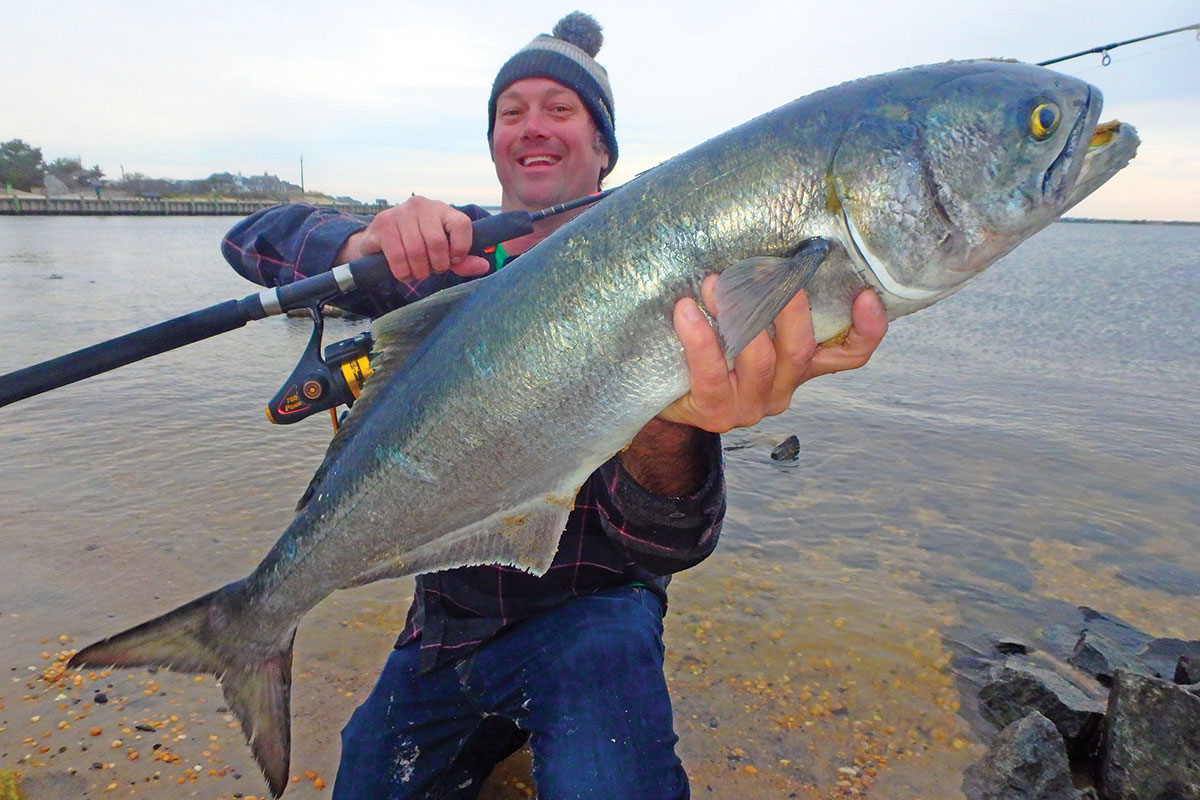
Surface Strikes
Nothing buckles your knees like bluefish crushing a topwater popper. Strikes are violent and unforgiving. The first rule of tossing topwater lures for bluefish is to get rid of the treble hooks on any plug or popper and replace them with single hooks. If you choose not to heed that advice, well, as the southern folks say, bless your heart. The crazed thrashing of bluefish on deck or at boatside will invariably fling the lure into your hands, clothing or worse. I cannot tell you how many treble hooks I’ve had to pull out of people, so please, replace the trebles. That said, the aggressive nature of blues calls for topwater action.
Utilize heavy 50- to 60-pound leader tied to a 100-pound TA Clip and bring out those old plugs and lures; rest assured, when the action is good, any popper or hard slidebait will usually work. Of course, if you have an old-school Atom Popper, by all means, throw it on, as the hard plastic construction is built for the damage done by bluefish. Work poppers frantically creating as much commotion as possible to make them aware of the “fleeing baitfish” and set the hook hard, fighting the fish with a heavier drag setting to muscle in the fish. If netting a fish, be sure to use rubber nets over the mesh nets, as you will have fewer tangles from a flopping blue and be able to release the fish faster.
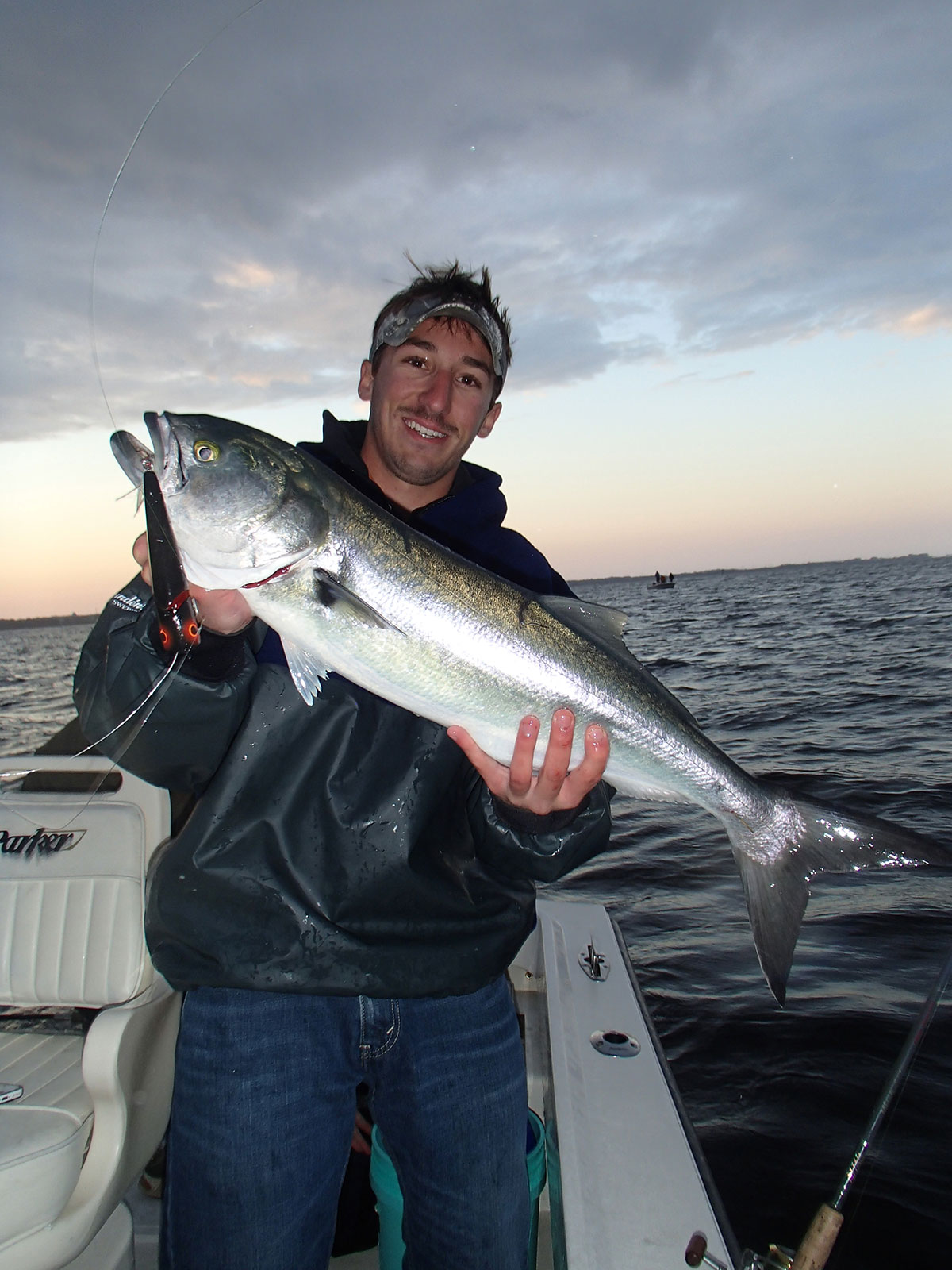
Heavy Metal
Sometimes, during the spring, blues will stay deeper, and that’s when to bring out the metals. Most metal lures come equipped with single hooks so that box is checked off, plus they can take a real beating. Ava jigs are the go-to lure from size 007 to A27 in the backwaters, where they can be cast and retrieved at a moderate pace before you get a sudden stop hit from the chopper. Other lures that work well are Crippled Herring 1-ounce jigs, Deadly Dicks and RonZ glass minnows. Metals are great for unhooking fish as you can usually grab the metal itself instead of the leader to control and handle the fish more safely. I find that metals will work better than poppers if the water temps are in the low to mid-50s. It should also be said here that you should leave any and all rubber baits at home for obvious reasons unless you have an unlimited budget to lose lures on every cast.
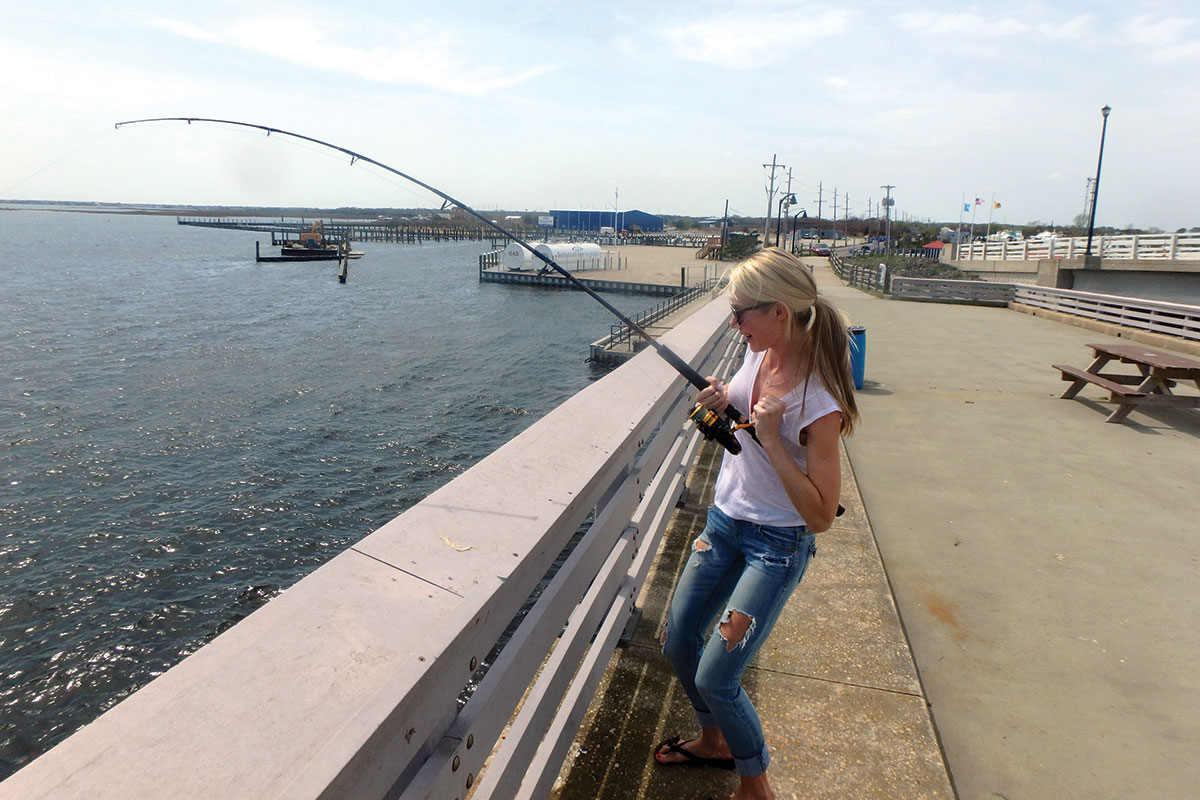
Pretty Fly
If you’ve had your fill of bluefish on standard lures, why not elevate your game and bring out the longrod. A 9- to 10-weight rod is sufficient, so long as your tippet is upped to 30- or 40 pound line. Clouser and Deceiver Flies will get beaten up pretty good, so you only have about a dozen blues to catch before the fly becomes dehaired and needs to be replaced, unless you opt to fling out epoxies like Surf Candies.
The battle on the longrod is unparalleled, with ripping runs and aerial antics from the gators, and is surely a way to get your blood pumping. Strip quickly when you come upon a pack of blues, or have an angler sample the area with a popper to see if any blues are around before you whip out a fly cast.
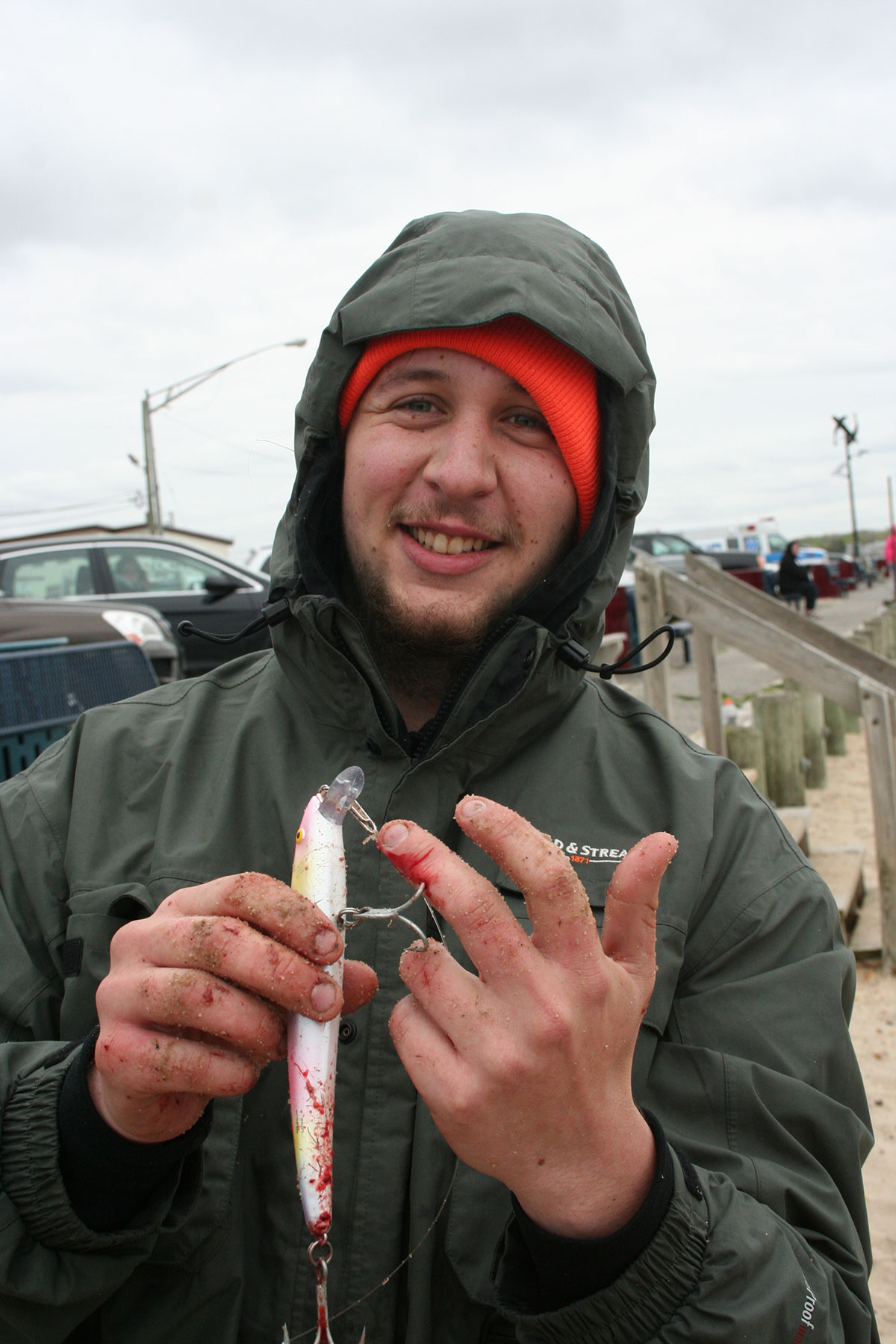
Will we see the big blues again this spring? With warmer-than-average winter waters, the spring run could be bone-jarring. Bunker schools are already thick in the New Jersey, Delaware Bay region in March, and if the schools are pushed inside the bays from easterly blows, blues could very well pack inside the bays and stick there for weeks on end
Only time will tell, but one thing is for sure: You had better prepare correctly to tackle the blitzkrieg of blues, for they wait for no man or angler and have no qualms about crushing your dreams when they are on their feeding frenzy.
